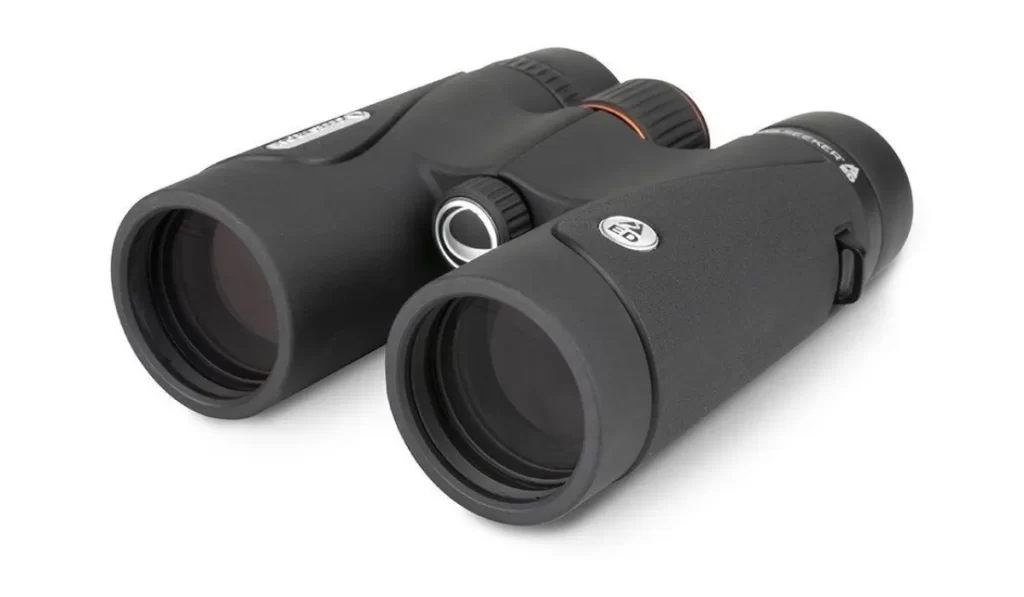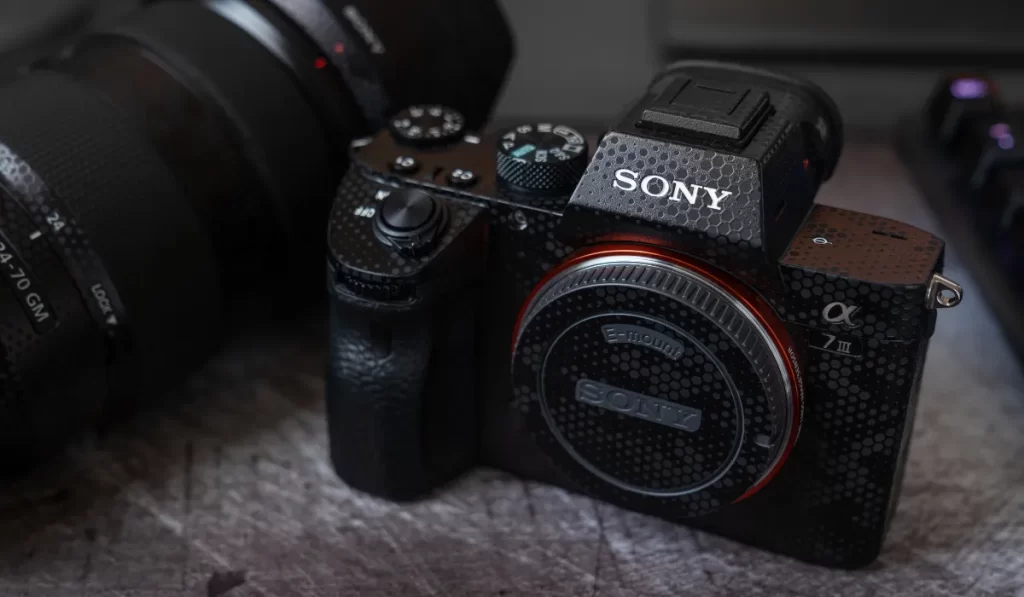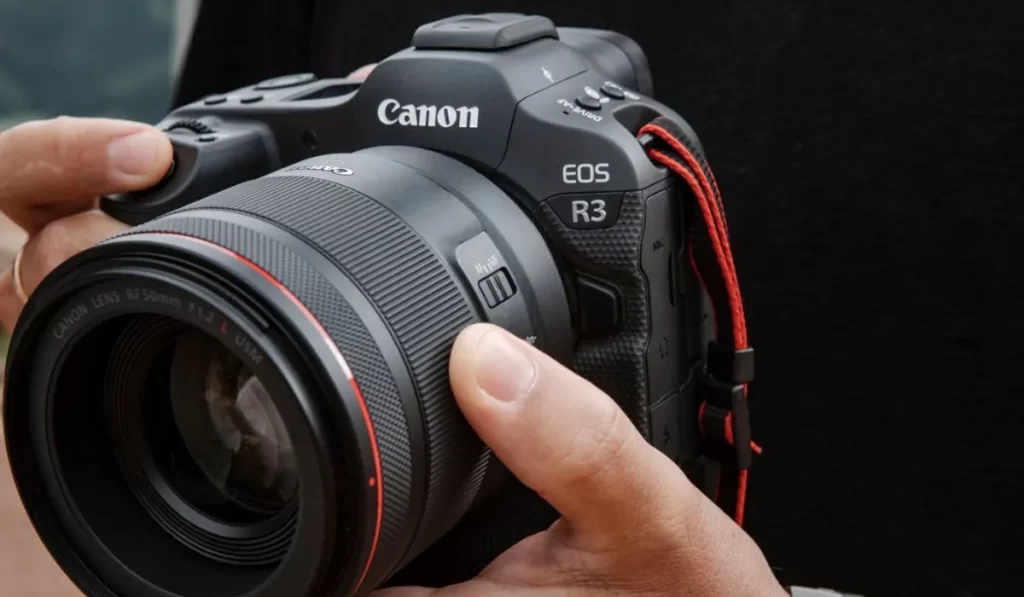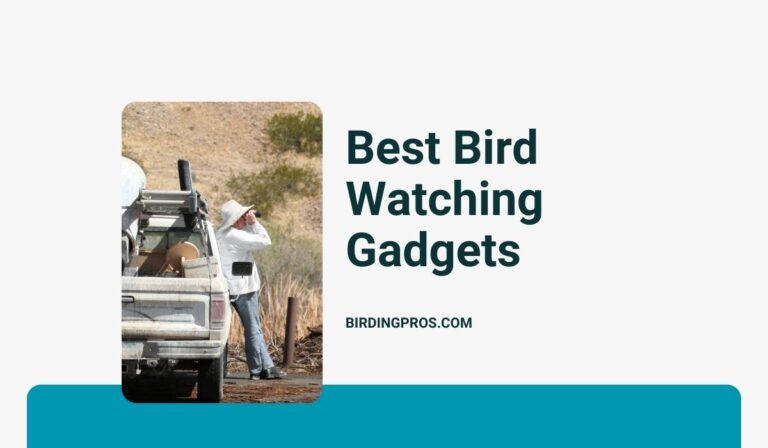Bird Watching Gear Checklist: Pros and Cons
Binoculars, a reliable field guide, and comfortable clothing form the cornerstone of any birding kit. As you gain experience, investing in advanced equipment such as spotting scopes, cameras, and high-tech gadgets can significantly enhance your birding adventures.
Table of Contents
The Joy of Bird Watching
Bird watching combines the thrill of discovery with the serenity of nature. It encourages a deeper connection to the environment and promotes mindfulness.
Observing birds in their natural habitats fosters a sense of wonder and appreciation for biodiversity. Bird watching is not just a hobby; it’s a gateway to understanding and protecting our ecosystems.
Essential Gear for Beginners and Pros
For those new to bird watching, starting with the basics is crucial. Bird watching, a pastime cherished by many, opens a window to the natural world.
Whether you’re a novice birder or a seasoned ornithologist, having the right gear enhances the experience and increases the likelihood of successful and enjoyable outings.
Binoculars: Your Window to the Bird World
Binoculars are perhaps the most critical tool for bird watchers, as they bring distant birds into clear view, allowing for detailed observation and identification.
With a myriad of options available, choosing the right pair can be daunting. Here, we examine three highly-regarded binoculars from Vanguard, Pentax, and Celestron, suitable for birders at different levels.
Features to Look for in Binoculars
When selecting binoculars, key features to consider include magnification, objective lens diameter, field of view, and optical quality.
Magnification between 8x and 10x is ideal for bird watching, providing a good balance between zoom capability and stability. The objective lens diameter determines how much light enters the binoculars, affecting brightness and clarity, especially in low-light conditions.
A wide field of view helps track moving birds more easily. Additionally, look for binoculars with high-quality optics, such as ED (Extra-low Dispersion) glass, for sharper, clearer images.
Top Picks for Every Budget
Vanguard Endeavor ED II

The Vanguard Endeavor ED II binoculars are an excellent choice for both beginners and experienced birders seeking high-quality optics at a reasonable price.
These binoculars feature ED glass, which significantly reduces chromatic aberration and enhances color accuracy and contrast.
With a magnification of 8x and an objective lens diameter of 42mm, the Endeavor ED II provides bright, clear images and a wide field of view, making it easier to spot and follow birds in their natural habitat.
The Endeavor ED II is also built for comfort and durability. It has a magnesium alloy body that is both lightweight and robust, along with a comfortable grip and a large focus wheel for precise adjustments.
Its waterproof and fog-proof design ensures reliable performance in various weather conditions, making it a dependable choice for outdoor adventures.
Pentax ZD 10×43 ED

For birders seeking a mid-range option with superior optical performance, the Pentax ZD 10×43 ED binoculars are an excellent investment.
These binoculars boast a 10x magnification and 43mm objective lenses, offering a great balance between magnification power and light-gathering capability.
The ED glass elements minimize chromatic aberration, resulting in sharp, high-contrast images with true-to-life colors.
The Pentax ZD series is known for its rugged build quality. The binoculars feature a durable, rubber-armored housing that is both waterproof and nitrogen-purged to prevent internal fogging.
This ensures reliable performance in harsh weather conditions. The ergonomic design includes an adjustable eyecup and diopter adjustment, providing a comfortable viewing experience for extended periods.
Celestron TrailSeeker ED

The Celestron TrailSeeker ED binoculars are a top choice for birders who want high-end features without breaking the bank.
With an 8x magnification and 42mm objective lenses, these binoculars deliver bright, detailed views suitable for various birding environments.
The use of ED glass enhances image quality by reducing chromatic aberration, resulting in sharp, clear visuals with excellent color fidelity.
One of the standout features of the TrailSeeker ED is its impressive field of view, which allows birders to easily track fast-moving subjects.
The binoculars also feature a lightweight magnesium alloy frame that is both durable and easy to handle. The waterproof and fog-proof construction ensures that the TrailSeeker ED can withstand the elements, making it a reliable companion for outdoor excursions.
The TrailSeeker ED includes fully multi-coated optics and phase-coated BaK-4 prisms, which enhance light transmission and provide bright, high-contrast images even in low-light conditions.
The binoculars are also equipped with twist-up eyecups and a large focus knob for comfortable and precise adjustments.
Selecting the right binoculars enhances the bird watching experience, making it easier to observe and identify birds in their natural habitats. The Vanguard Endeavor ED II, Pentax ZD 10×43 ED, and Celestron TrailSeeker ED each offer unique features and advantages, catering to different preferences and budgets.
Read More: Feathers and Fortitude: How Do Birds Survive in the Desert?
Bird Identification Books and Apps
Identifying birds accurately enhances the bird watching experience. Traditional field guides and modern apps both serve as valuable resources.
Guidebooks to Get You Started
Classic field guides such as “The Sibley Guide to Birds” and “National Geographic Field Guide to the Birds of North America” are indispensable. These books offer comprehensive details, including illustrations, range maps, and behavior notes, making them perfect for both beginners and seasoned birders.
Must-Have Apps for Birders
Apps like Merlin Bird ID and eBird are revolutionizing bird identification and tracking. Merlin Bird ID uses AI to help identify birds from photos and audio recordings, while eBird allows users to log sightings and contribute to citizen science projects. Both apps provide real-time data and are invaluable for bird enthusiasts.
Cameras and Photography Tips
Capturing the beauty of birds through photography requires the right equipment and techniques. High-quality cameras are essential for documenting the intricate details and behaviors of birds, enabling bird watchers to share their experiences and contribute to scientific knowledge.
Choosing the Right Camera for Bird Photography
When selecting a camera for bird photography, factors such as autofocus speed, burst rate, and image quality are crucial.
The right camera can make the difference between a blurry shot and a stunning, detailed photograph. Here, we explore three top-tier cameras favored by professional bird photographers: the Sony Alpha 1, Canon EOS R3, and Nikon D850.
Sony Alpha 1

The Sony Alpha 1 is a powerhouse in the world of bird photography. With a 50.1-megapixel full-frame sensor, it delivers exceptional image resolution, capturing the finest details of bird feathers and plumage.
The Alpha 1’s autofocus system is remarkably fast and accurate, boasting 759 phase-detection points that cover 92% of the image area. This ensures that even the most erratic bird movements are tracked and focused precisely.
One of the standout features of the Alpha 1 is its high burst rate, capable of shooting at 30 frames per second with full autofocus and auto-exposure tracking. This makes it ideal for capturing rapid sequences of birds in flight or during dynamic behaviors.
The camera’s advanced Real-time Eye AF for birds further enhances its ability to lock onto and follow a bird’s eye, ensuring sharp, focused images.
Canon EOS R3

The Canon EOS R3 is another excellent choice for bird photographers, particularly those looking for a camera that combines speed and durability.
The EOS R3 features a 24.1-megapixel full-frame sensor and the new DIGIC X image processor, which together provide outstanding image quality and impressive low-light performance.
What sets the EOS R3 apart is its autofocus capabilities. It utilizes Canon’s Dual Pixel CMOS AF II with up to 1,053 autofocus points, ensuring fast and accurate focus across the frame.
The camera also includes a revolutionary Eye Control AF, allowing photographers to select autofocus points simply by looking at them through the viewfinder. This intuitive feature can be incredibly useful for quickly adjusting focus when tracking birds in motion.
The EOS R3 can shoot at up to 30 frames per second with the electronic shutter, making it competitive with the Sony Alpha 1 in terms of burst rate. Its robust build and weather sealing are also advantageous for outdoor and challenging conditions often encountered in bird photography.
Nikon D850

The Nikon D850 remains a favorite among bird photographers for its combination of resolution, dynamic range, and versatility.
This DSLR features a 45.7-megapixel full-frame sensor, providing incredibly detailed and high-quality images. The D850’s wide dynamic range allows it to handle various lighting conditions, capturing the subtle nuances of a bird’s environment.
While the D850’s autofocus system, with 153 focus points and 99 cross-type sensors, is not as advanced as the mirrorless options, it is still highly effective for bird photography.
The camera’s 7 frames per second shooting speed (which can be increased to 9 fps with the optional battery grip) is sufficient for capturing birds in action, though not as fast as the mirrorless counterparts.
One of the D850’s strengths is its optical viewfinder, which some photographers prefer over electronic viewfinders for its clarity and real-time feedback. The D850 also excels in battery life, allowing for extended shooting sessions without the need for frequent recharges.
Quick Tips for Capturing Stunning Bird Photos
To photograph birds successfully, patience and practice are key. Here are some tips to help you make the most of your camera:
- Use a Fast Shutter Speed: Birds are often fast and unpredictable. A shutter speed of 1/1000th of a second or faster can help freeze motion and capture sharp images.
- Shoot in Burst Mode: Take advantage of your camera’s high burst rate to capture multiple frames in quick succession, increasing your chances of getting the perfect shot.
- Focus on the Eyes: Sharp eyes are crucial for compelling bird photographs. Use your camera’s eye autofocus feature if available, or manually focus on the eyes.
- Understand Bird Behavior: Knowing when and where birds are most active, and understanding their behavior, can help you anticipate movements and position yourself for the best shots.
- Stay Quiet and Camouflaged: Minimizing your presence can help you get closer to birds. Wear neutral colors and move slowly and quietly to avoid startling them.
Hiking Gear for the Avid Birder
Comfort and practicality are essential when venturing into the field for bird watching.
Clothing and Footwear for Comfort and Stealth
Choose lightweight, breathable clothing in neutral colors to blend into natural surroundings. Layering is important for adapting to changing weather conditions. Footwear should be sturdy, waterproof, and comfortable for long hikes. Brands like Merrell and Columbia offer excellent options for outdoor activities.
Packing the Perfect Birding Daypack
A well-prepared daypack should include water, snacks, a first-aid kit, and weather-appropriate gear like a rain jacket or sun hat. Don’t forget a notebook or birding journal, a field guide or app, and extra batteries or a power bank for electronic devices.
Bird Feeders and Attracting Birds to Your Yard
Creating a bird-friendly environment at home provides opportunities for observation and supports local bird populations.
Types of Feeders and Best Practices
Different feeders attract different birds. Tube feeders are great for small songbirds, while platform feeders attract a variety of species. Suet feeders are perfect for woodpeckers and nuthatches. Clean feeders regularly to prevent disease, and use high-quality feed like black oil sunflower seeds or suet cakes.
Creating a Bird-Friendly Habitat at Home
In addition to feeders, provide water sources and native plants to create a welcoming habitat. Bird baths and small ponds offer drinking and bathing opportunities. Planting native trees, shrubs, and flowers supplies food, shelter, and nesting sites. Avoid pesticides to ensure a safe environment for birds.
Advanced Gear for Serious Birders
For those looking to take their bird watching to the next level, advanced gear offers enhanced capabilities.
Spotting Scopes and Their Uses
Spotting scopes provide greater magnification than binoculars, ideal for observing distant birds. They are especially useful for shorebirds, waterfowl, and raptors. Choose a scope with a sturdy tripod, and consider features like zoom capabilities and waterproofing for best performance.
High-Tech Gadgets for Birding
Advanced birders may utilize gadgets like GPS devices, digital field guides, and bird call playback devices. GPS units help navigate and record precise locations of sightings. Digital field guides offer interactive identification tools. Playback devices can attract elusive species for closer observation, but should be used ethically to avoid disturbing birds.
Bird Watching Etiquette and Conservation
Respect for birds and their habitats is paramount for ethical bird watching.
Respectful Bird Watching Practices
Minimize disturbances by keeping a respectful distance from birds and their nests. Avoid using playback devices excessively. Stick to designated trails and respect private property. Leave no trace by carrying out all trash and minimizing impact on natural areas.
Contributing to Bird Conservation Efforts
Supporting bird conservation can be done through various means, such as participating in citizen science projects, donating to conservation organizations, and advocating for habitat protection.
Educating others about the importance of birds and their ecosystems helps foster a community of conservation-minded individuals.
FAQs About Bird Watching Gear Checklist
What magnification is best for bird watching binoculars?
Answer: 8x to 10x magnification is ideal. 8x offers a wider field of view for locating birds, while 10x provides more detail but requires steadier hands.
How do I maintain and clean my binoculars to ensure they last longer?
Answer: Use a soft brush and microfiber cloth for lenses, wipe the body with a damp cloth, store in a protective case, and ensure they are waterproof and fog-proof.
How do I capture clear and sharp bird photos?
Answer: Use a fast shutter speed (1/1000th of a second or faster), shoot in burst mode, focus on the bird’s eyes, and understand bird behavior to anticipate movements for better shots.
How do I choose between DSLR and mirrorless cameras for bird photography?
Answer: Mirrorless cameras are generally lighter and have faster autofocus, while DSLRs offer better battery life and optical viewfinders. Choose based on your priority—portability and speed vs. battery life and viewfinder preference.
Conclusion: Preparing for Your Next Bird Watching Adventure
As you gear up for your bird watching excursions, a well-prepared kit and mindful practices ensure a rewarding experience.
Ensure you have all essential gear: binoculars, field guide or app, camera, appropriate clothing, and a well-stocked daypack. Double-check batteries and memory cards, and pack snacks and water for sustenance.
Bird watching is more than a hobby; it’s a lifelong journey of discovery and connection with nature. Embrace the joy, patience, and curiosity it fosters.






